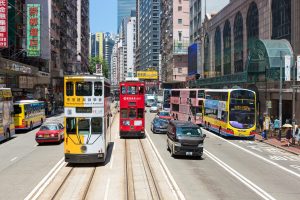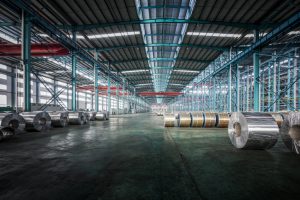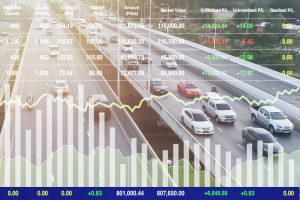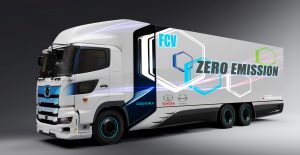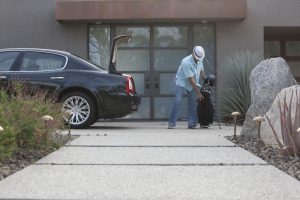A bulletin on March unit sales of new light vehicles (LVs) in the US was released last weekend (April 2). Impacted by the novel coronavirus pandemic, sales for the month logged a significant 38.4% year-on-year decline, at 990,332 units. The seasonally adjusted annual rate (SAAR) was 11.35 million units. No prospect of recovery is yet in sight. With the number of unemployment claims filed in the last week of March reaching an unprecedented high of over 6.6 million, new car sales for this month (April) are expected to decline to an annual rate (SAAR) of 6 to 7 million units. This is forecast to be well below the 9.1 million units recorded in February 2009 immediately after the Lehman Brothers collapse.
On March 26, Moody’s Investors Service (“Moody’s”) downgraded the rating of Nissan by two notches (from Baa1 to Baa3). Moody’s also lowered the ratings of Toyota Motor (Aa3 to A1), Honda (A2 to A3), Yamaha Motor (A3 to Baa1), BMW (A1 to A2), and Ford (Ba1 to Ba2) by a notch each. In addition, on March 25 the company announced that it would perform downward revisions of the ratings of seven European OEMs (Daimler, Jaguar Land Rover, Peugeot, Renault, Volkswagen, Volvo, and McLaren). Moody’s foresees reduction in demand from the novel coronavirus for the next several months, particularly in Europe and North America, with a global decline of approximately 14% in 2020.
At the same time, optimism is gradually rising in China, the first country hit by the virus. “Economic indicators will likely show significant improvement in the second quarter and the Chinese economy will return to potential output level rather swiftly,” said a Deputy Governor of the People’s Bank of China on March 22 regarding the macroeconomic outlook. Attention is indeed focusing on future movements.
It is still unknown when the current situation will subside and whether the novel coronavirus epidemic will reach a plateau, even if not a conclusion. However, even if a plateau is reached, there is no question that the world itself will change significantly. The prominent journalist Thomas Friedman expressed this by saying, “We’ve gone from B.C. — Before Corona — to A.C. — After Corona.” He added, “The world has flattened since 2004. And, like it or not, it has become interconnected and interdependent. As a result, while the globalization of the economy progresses, when things go bad in one place, that trouble can spread instantly worldwide. We are now trying to take on this exponentially propagating novel coronavirus with exponentially evolving IT and biotechnology. The result, however, is that social and political elements greatly affect this ability (as is made clear by comparison the situations of China or Singapore with those of Japan or the US). It is said that the appearance of a new vaccine will require least a year, but it will likely take even longer—after all, no vaccine has yet been developed for HIV or malaria. This means that, for a considerable length of time, we must live with the potential risks of novel coronavirus, and reconcile with it at best. In short, our lifestyles, society, and culture will all be greatly affected.”
Looking at mobility already reveals impacts of the virus. On March 18, Uber announced that it would temporarily suspend its UberPool rider matching service in the United States and Canada. This would seem quite natural in view of the principle of avoiding closed spaces, crowding, and close contact. The situation is also serious for Lyft’s ride-hailing service. Service prices (ride prices) have fallen by 11%; demand has fallen by about 20%, and is expected to fall by 35 to 60%. In response, Lyft has partnered with Amazon to address the issue of surplus drivers, with Amazon providing shopping, warehouse worker, and package delivery jobs to drivers.
The situation is even more serious in the area of micromobility. While Lime and Bird have made significant cuts to their fleets, several startups, including Wheels and Jump, are seeking ways to continue as businesses. Behind these developments is contraction in the demand for transportation due to the lockdown of cities, and already many companies are facing crises of business continuity. Regarding the micromobility business, while there is a negative view that sees a fear of contagion by sharing vehicles touched by unknown numbers of strangers, there is also a positive view that sees scooters as a way to avoid using crowded subways or buses when mobility is restored after the lifting of lockdowns. It is not yet known which is the correct viewpoint.
Regarding the shift to electric vehicles, including BEVs, EV sales in Europe are said to have been robust until February, before the epidemic. In January and February of 2020, sales of BEVs were 38,700 units and PHEVs were 28,700 units, representing respective 92% and 153% increases from the same period in the previous year. The top-selling models for February were as follows:
Renault Zoe 6,391 units
VW Golf-E 3,695
Tesla Model 3 3,481
Peugeot 208EV 3,463
Nissan Leaf 2,416
In the United States, GM began retooling its Detroit plant for BEV production on schedule (March 16), amid the rampant novel coronavirus epidemic. GM plans to invest 2.2 billion dollars in the renovation, and will begin production of the GMC Hummer EV in the latter half of 2021. GM likely views BEVs as proliferating in the long run. Moreover, President Trump announced new fuel economy standards on March 31, lowering the requirement for 54 miles per gallon (CAFE) by 2026 to 40 miles per gallon. This move is seen as upending the climate change countermeasures of the preceding Obama administration. According to Environmental Protection Agency Administrator Andrew Wheeler, the new standard will reduce the total cost of ownership (TCO) for a car by 1,400 dollars, even with fuel cost increases factored in, and will result in demand for an additional 2.7 million automobiles per year. He further added that automobile OEMs under the new standards will be able to make new investments of 15 billion dollars, and that traffic accident casualties would decline by 49,300 (3,300 fatalities + 46,000 injuries) through 2029. However, the move naturally generated strong opposition over health and environmental protection concerns, and vigorous debates are expected to play out in courts. Attention will focus on how automotive OEMs will respond to the new standards. (GM, Toyota, and FCA are opposed to the upcoming establishment of proprietary mileage standards in California, while VW, Ford, Honda, and BMW have expressed support).
With regard to environmental regulations, China appears to be moving ahead in considering the easing of some emission standards. The China VI Emission Standard is set to go into effect on July 1, but implementation will likely be delayed in light of economic decline caused by the novel coronavirus. Inventory of vehicles that are not compliant with the new regulations is said to have increased by several million units due to the epidemic.
Summarizing the results of the above observations, the following hypotheses could be made regarding the mobility situation in the “A.C. era”:
- New automobile demand will remain sluggish for at least a year, until prospects for an end to the epidemic occur and economic activity recovers. The present forecast of a 2020 decline in unit sales at an annual rate of 12-14% is based on the assumption of recovery in the fourth quarter of 2020. However, if the response to the epidemic is prolonged, a further downswing will be unavoidable.
- Global warming is said to strongly underlie over 20 new infectious diseases, including novel coronavirus, SARS, and ebola hemorrhagic fever. If this is addressed head-on, social demands for sustainability, including ESG and the SDGs, will further heighten.
- As the macro economy contracts for the time being, environmental standards may face slight revisions or delays in implementation. However, the direction of regulations remains unchanged. In the automotive industry, domains of competition and domains of cooperation aimed at macro efficiency will be worked out. In other words, even as companies adapt to CASE, this will not be an across-the-board response as in the past, but will be more selective in its investment targets.
- Taking a more familiar point of view, mobility users have a desire to reduce burdens while obtaining minimal travel that is clean, personal, and flexible. Accordingly, there are pros and cons in the progress of sharing. The new car market will likely move from the SUV orientation up to now, to become more focused on short-distance, economical, compact cars for everyday travel.
- In any case, the shift to BEVs for everyday travel will progress. Amid the pursuit of TCO, a rethinking of infrastructure systems, including battery sharing, will likely proceed.
- For the time being, “nesting” demand will continue. The result will be movement more of things than of people. Accordingly, the evolution of MaaS for logistics purposes, particularly technology and services aimed at the “door to door” last mile, will evolve.
I hope like to study these in the future as my primary work.
On March 25, Swedish environmental activist Greta Thunberg announced on social media that she would refrain from going out for fear of novel coronavirus infection. Despite this, she is not relaxing her appeals to avoid global warming.
In Paris, greenhouse gas emissions are said to have fallen rapidly as a result of the lockdown to combat the epidemic. These past few days, the air in Tokyo, too, feels cleaner when opening windows. The future, which had seemed so far away, is apparently not so distant after all. Sustainability has finally reached its limits, and the unseen hand of God may have finally begun to move toward self-purification.



